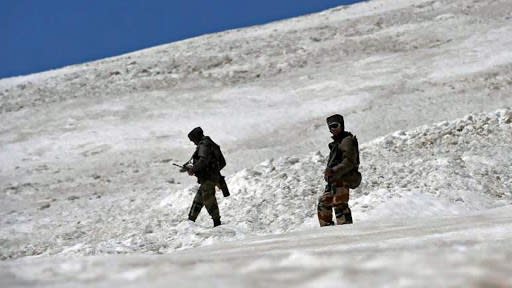Indian Army Refutes Reports of Chinese Troops Entering Indian Territory and Occupying Positions in Finger 2 and 3 of Pangong Tso Lake in Eastern Ladakh

Srinagar, October 30: The Indian Army on Friday refuted claims made by a media report claiming that the Chinese troops have further transgressed into Indian territory in several areas of eastern Ladakh. According to a report by The Hindu, troops of People's Liberation Army (PLA) entered into the Indian territory and occupied positions in Finger 2 and 3 of north bank of Pangong Tso lake, which is in eastern Ladakh. The report quoted former BJP Member of Parliament Thupstan Chhewang, who represented Ladakh, making the claims.
The report further informs that Chhewang received information from locals in Ladakh living in forward areas along the Line of Actual Control (LAC) that Indian soldiers were living in tents and it was not adequate for them in sub-zero conditions. However, the Indian Army refuted claims made in a report by The Hindu and termed it as 'fake news'. A fact check by PIB stated that the news of Chinese troops entering Ladakh is false and misleading. 'China Has no Locus Standi to Comment on India's Internal Matter', MEA Hits Back at Beijing For Calling Ladakh's UT Status Illegal.
Here's the tweet by PIB:
Also Read | Is Government Providing Free Tablets to Students? PIB Fact Check Reveals Truth Behind Viral WhatsApp Message
.@the_hindu citing a claim, has published that Chinese troops have further transgressed into Indian territory and occupied positions in Finger 2 and 3 of the north bank of #PangongTso Lake.#PIBFactCheck: It is a #Fake news. @adgpi has refuted this statement. pic.twitter.com/PvNjUQRCt4
— PIB Fact Check (@PIBFactCheck) October 30, 2020
India and China have been engaged in a military stand-off in Eastern Ladakh for the past five months. The tension in eastern Ladakh escalated after the Chinese soldiers attempted to 'intimidate' Indian troops along the northern and southern bank of Pangong lake area between August 29 and September 8 where even shots were fired in the air for the first time at the LAC in 45 years. India has all along been maintaining that the onus is on China to carry forward the process of disengagement and de-escalation at the friction points in the mountainous region.

